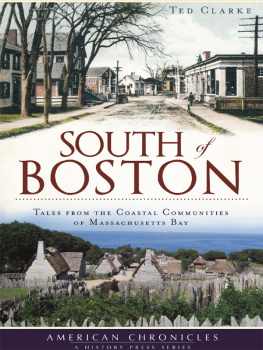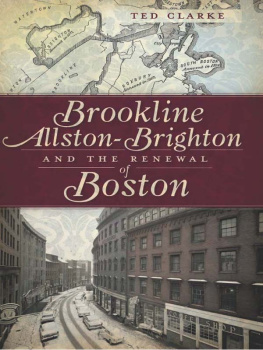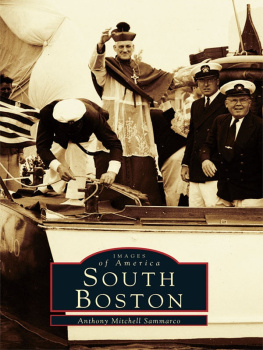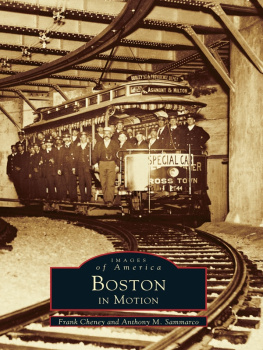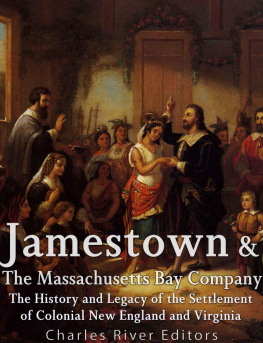

Published by The History Press
Charleston, SC 29403
www.historypress.net
Copyright 2010 by Ted Clarke
All rights reserved
All images are from Wikipedia or the authors private collection.
First published 2010
e-book edition 2013
Manufactured in the United States
ISBN 978.1.62584.234.3
Library of Congress Cataloging-in-Publication Data
Clarke, Theodore G.
South of Boston : tales from the coastal communities of Massachusetts Bay / Ted Clarke.
p. cm.
Includes bibliographical references and index.
print edition ISBN 978-1-60949-042-3
1. Massachusetts--History, Local. 2. Massachusetts Bay Region (Mass.)--History, Local. 3. Atlantic Coast (Mass.)--History, Local. 4. Plymouth Region (Mass.)--History, Local. 5. Boston Region (Mass.)--History, Local. 6. Massachusetts--History, Local. 7. City and town life--Massachusetts. 8. City and town life--Massachusetts Bay Region. 9. City and town life--Massachusetts--Atlantic Coast. I. Title.
F64.C636 2010
974.4--dc22
2010037420
Notice: The information in this book is true and complete to the best of our knowledge. It is offered without guarantee on the part of the author or The History Press. The author and The History Press disclaim all liability in connection with the use of this book.
All rights reserved. No part of this book may be reproduced or transmitted in any form whatsoever without prior written permission from the publisher except in the case of brief quotations embodied in critical articles and reviews.
CONTENTS
INTRODUCTION
The coast of Massachusetts, from Cape Ann in the north to Cape Cod in the south, was the place where the major settlement of New England, and of America, began. Many of the towns in that coastal crescent played major parts in that development, and others added to its later growth.
Our purpose in this book will be to explore the history and growth of the southern sector of this crescent from Boston to Plymouth. In addition to parts of Boston, this will include Quincy, Weymouth, Hingham, Hull, Cohasset, Scituate, Marshfield, Duxbury, Kingston and Plymouth.
The area had been home to Native American tribes for the past ten thousand years. These had progressed from hunting/gathering societies to ones that used agriculture and had developed primitive tools. They made items of leather and ceramics, weaved baskets, used canoes for transportation and made their homes in wigwams. They also had spiritual traditions.
By the time of first contact with Europeans, about ten thousand Native Americans lived in the coastal area of Massachusetts. However, that first contact had fatal consequences. Diseases for which the Indians had no immunity spread quickly, one of the most widespread outbreaks coming just a few years before the Pilgrims came to America. The ranks of the natives were reduced by nearly 90 percent.
The location of Plimoth Plantation, in fact, was built on a site that was formerly the home of the Pawtuxet tribe. Only one of its members remained, and he was a man without a country. His name was Squanto, and he would be a great help to the Pilgrims. Squanto was a key component in securing the first settlement, and we will highlight what we know of him.
Another man who was key to the exploration and settlement was John Smith, who deserves more attention than he gets for these deeds. The Pilgrims had read Smiths Description of New England and had learned of its attractions from reading the words and following the maps of a man who is best known for his days in Jamestown, Virginia, but who also explored and charted this part of the coast, publicizing his findings.
Unlike many colonists who settled farther south, those who came to the coast of Massachusetts Bay between Cape Ann and Cape Cod were families who had come for religious freedom, not to make a profit. Many were from the middle classes. The Separatists of Plymouth, commonly called the Pilgrims, had come to America in order to find religious freedom.
So, too, had the Puritans, another sect who settled first on the northern shores of Massachusetts Bay. Governor Endicott had landed at Salem, and Cape Ann had been settled by the Dorchester Company, which held a charter for a Massachusetts Bay Colony. It was the charter that John Winthrop used when he and others moved from Salem to Charlestown and then to Boston in 1630. Within a decade, sixteen thousand English immigrants had made homes along this stretch of shore.
The histories of the individual towns had much overlap. Their relationships with the Native Americans were quite similar. They found ways of making a living that were in the beginning rudimentary and nearly the same from place to place. That would change as places developed over the years.
Wherever they settled, these religious people placed their meetinghouse at the center of the community. The farms were on the outskirts, and the usual pattern was to have a village green with a church at one end and houses built around it. Thats why so many New England towns still have those features.
Another feature brought by the Puritans was self-government. Until about 1660, their charter allowed them to run their own affairs. In granting it, King Charles may not have understood that the settlers were a Puritan group and thought they were just another stock company. At first, local government was run by all the freemenPuritan males. But after a short time, they used representative governmenta tradition they gave to the rest of America.
Winthrop and his followers believed that the Puritans were Gods Chosen People and that they must set an example for all who came to America. We shall be as a city on a hill Significantly, his primary settlement was on a hillBeacon Hilland he built from there. That kind of thinking prevailed for a while but was less common with each incoming wave of settlers, most of whom put survival and self-interest ahead of such ideals, though their activities were infused with Christian thought.
In trying to understand who these people were, what they were like and what allowed them to affect early American history, we need to bear in mind that they were people who braved difficulties in leaving England, making a dangerous and difficult voyage of several weeks under trying conditions and then surviving a lack of food and shelter and an unfamiliar climate to make a foothold on the rocky New England shores. They were a hardy type, highly motivated and willing to take chances. If we use the light of this understanding to look at some of the things they did, they are more readily understood.
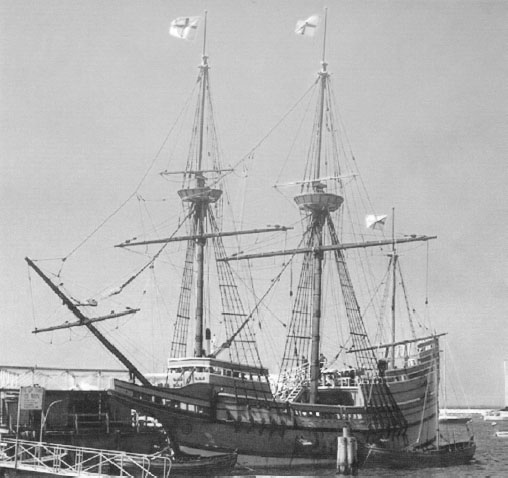
The Mayflower II at Plymouth Harbor.
In order to follow Gods will, all these folks believed, one must read the Bible, and that meant that children must learn to read. Thus, education was important in New England, and schools were set up, including a college in Cambridge that was in time named Harvard College for John Harvard, who had willed his library to the school.
Farming and fishing were part-time things on the rocky coast of Massachusetts, and settlers learned to use their own skillsYankee ingenuityto make the things they needed. Then, during the Revolution and the War of 1812, when manufactured goods from abroad were hard to come by, they went into manufacturing on a large scale, using the water power provided by rivers in the area.
Next page
